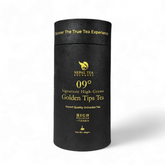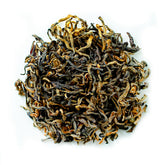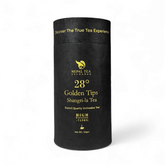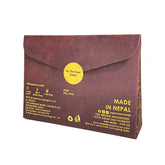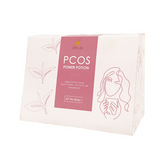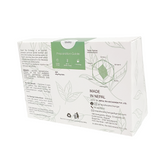U.S.-China Trade War: Impact on Nepal’s Tea Industry in 2025
Nepal’s tea industry has long been a symbol of the country’s rich cultural heritage and agricultural prowess. Known for its high-quality orthodox teas, Nepal has carved out a niche in the global market, offering unique flavors that rival those of its more famous neighbors, India and China. The tea industry is not just a source of national pride; it is a vital contributor to Nepal’s economy, providing livelihoods for thousands of smallholder farmers and workers. However, as global trade dynamics shift, particularly amid the ongoing U.S.-China trade war, Nepal’s tea industry faces both unprecedented challenges and new opportunities.
Export Growth and Market Expansion: A Silver Lining Amid Global Tensions
In 2025, Nepal’s tea exports have reached new heights, with a record-breaking 25,000 metric tons exported globally, according to the National Tea and Coffee Development Board (NTCDB). This marks a 25% increase from 2022, driven by growing demand in key markets such as the United States, China, and Europe. The U.S.-China trade war, which escalated in 2024 with additional tariffs on Chinese goods, has inadvertently benefited Nepal’s tea industry. As Chinese tea exports to the U.S. faced higher tariffs, Nepali tea producers seized the opportunity to fill the gap, particularly in the specialty and organic tea segments.
The U.S. market has become a major growth driver for Nepali tea, with exports to the country increasing by 40% in 2025. American consumers, increasingly drawn to sustainable and ethically sourced products, have embraced Nepali teas for their unique flavor profiles and artisanal quality. Similarly, Europe has seen a 30% rise in Nepali tea imports, with countries like Germany and the UK leading the charge.
However, the trade war has also created economic uncertainties, with fluctuating exchange rates and rising shipping costs posing challenges for exporters. Despite these hurdles, Nepal’s tea industry has demonstrated remarkable resilience, leveraging its reputation for quality to maintain a competitive edge.
Challenges with India: A Persistent Thorn in Nepal’s Tea Exports
While Nepal’s global exports are thriving, its relationship with India—historically its largest market—remains fraught with challenges. In 2025, India implemented even stricter pesticide residue standards, leading to the rejection of several Nepali tea consignments. This has exacerbated tensions between the two countries, with Nepali exporters accusing India of using non-tariff barriers to protect its domestic tea industry.
India’s dominance in the global tea market continues to cast a long shadow over Nepal’s exports. In 2025, India accounted for over 60% of Nepal’s total tea exports, making it difficult for Nepali producers to reduce their dependency on this market. To address this issue, the Nepali government has been actively promoting market diversification, with a focus on expanding exports to the Middle East and Southeast Asia.
Quality Assurance and Branding: Building a Global Reputation
In 2025, Nepal’s tea industry has made significant strides in enhancing product quality and strengthening its global brand. The “Nepal Tea” trademark, launched in 2023, has gained widespread recognition, helping to differentiate Nepali teas in the international market. Additionally, Nepali tea producers have continued to shine in global competitions, with three gold medals won at the 2025 Global Tea Championship.
To ensure compliance with international standards, the Nepali government has invested in state-of-the-art testing facilities and training programs for farmers. These efforts have paid off, with Nepali teas now meeting the stringent quality requirements of key markets like the U.S. and Europe.
Sustainability and Ethical Sourcing: A Path to Long-Term Growth
Sustainability and ethical sourcing have become central to Nepal’s tea industry in 2025. With consumers increasingly prioritizing environmentally friendly and socially responsible products, Nepali tea producers have embraced fair trade practices and sustainable farming methods. The Fair Trade Alliance Nepal reports that over 70% of Nepali tea gardens are now certified organic, up from 50% in 2022.
Efforts to improve workers’ wages and living conditions have also gained momentum. In 2025, the average daily wage for tea garden workers increased by 20%, thanks to advocacy by labor unions and support from international organizations. These initiatives have not only enhanced the quality of Nepali teas but also strengthened the industry’s appeal to ethically conscious consumers.
Economic and Social Impact: Empowering Communities
The growth of Nepal’s tea industry has had a transformative impact on local communities. In 2025, tea cultivation provides livelihoods for over 200,000 smallholder farmers and workers, many of whom are women. The industry has played a crucial role in empowering women, offering them financial independence and a stronger voice in their communities.
However, challenges persist. Climate change remains a significant threat, with erratic weather patterns affecting tea yields and quality. In response, the Nepali government and private sector have launched initiatives to promote climate-resilient farming practices, such as water conservation and soil management.
Conclusion: Navigating Challenges and Seizing Opportunities
As of 2025, Nepal’s tea industry stands at a pivotal moment. While the U.S.-China trade war and tensions with India present significant challenges, they also offer opportunities for market diversification and innovation. By focusing on quality assurance, sustainability, and ethical sourcing, Nepal can strengthen its position in the global tea market and ensure long-term growth.
The road ahead will not be easy, but with the right strategies and support, Nepal’s tea industry has the potential to thrive. As consumers around the world continue to seek out high-quality, ethically produced teas, Nepal is well-positioned to meet this demand and carve out a brighter future for its farmers and communities.
For tea enthusiasts and industry professionals alike, the story of Nepal’s tea industry is one of resilience, innovation, and hope—a testament to the power of tradition and the promise of progress.
What do you think?
As global trade dynamics continue to evolve, how can Nepal further leverage its unique strengths to overcome challenges and secure a sustainable future for its tea industry? Share your thoughts and ideas in the comments below!


